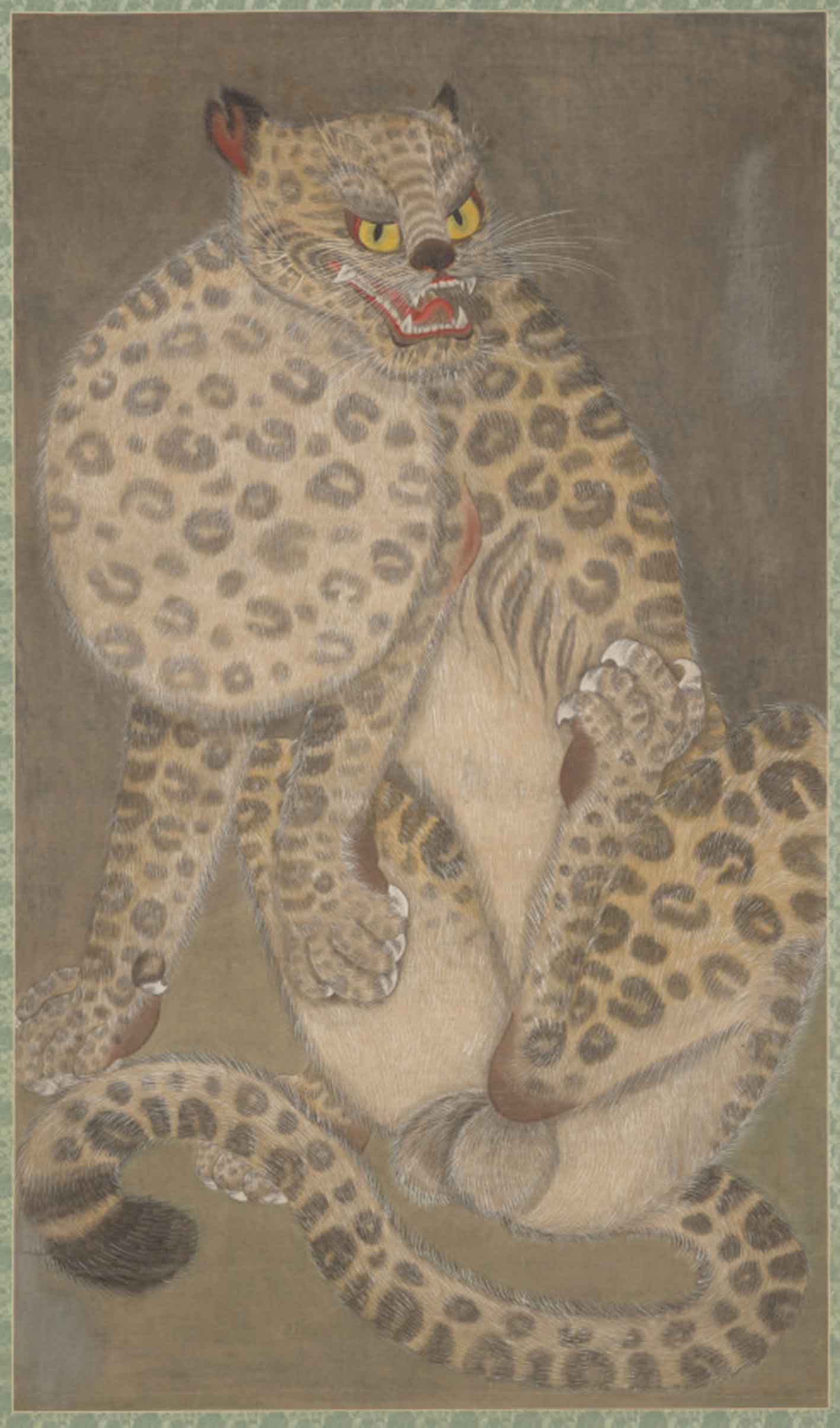In the 1960s, practitioners of Pop Art looked toward everyday commodities and commercial images for inspiration. Such an artistic spirit that challenged the rigid concept between high- and low-brow arts in fact had long existed in Korean art, flourishing in the late 1800s and early 1900s. Rendered in vibrant colours, Korean still-life paintings called chaekgeori, for example, are replete with mass-produced utilitarian items and trendy luxuries. This exhibition explores the art from early modern Korea.
Polychrome folding screens, such as chaekgeori, often complemented family festivities and reunions, beyond simply furnishing the living space of middle-class households. Blue-and-white porcelain, which features the abundant use of expensive cobalt blue and floral decor, is another artistic expression drawn from the emerging consumerism in early modern Korea. By the late 1800s, Korean art was becoming more inclusive and diverse, no longer exclusively for the elite of society.
Chaekgeori
Chaekgeori is a distinctive genre of still-life painting and translates as ‘books and things’ and are painted screens that depict scholarly objects, exotic luxuries, symbolic flowers, and gourmet delicacies dispersed in artful arrangements on bookshelves. Such screens were praised by King Jeongjo (reigned 1776-1800), and were enthusiastically collected by the educated elite throughout the 19th and early 20th century in Korea. Even as the Joseon court exercised a policy of isolation from the outside world, Western culture was introduced to Korea primarily through the court’s diplomatic contact with China. Western influences began to be seen in the latter half of the 19th century, when foreigners not only introduced Western ideas to Korea, but Korean art and culture was exported back to Europe.
Influence of Chinese Display Cabinets
Chinese display cabinets of the Qing period (1644-1911) inspired chaekgeori artists and the style became one the most prolific and enduring art forms of the Joseon dynasty (1392-1910. The screens also produced the earliest style of Korean painting to employ the European pictorial techniques of trompe l’oeil and chiaroscuro to create visual illusions of three dimensions on a two-dimensional surface. By the late 1800s, chaekgeori screens embellished the studies of scholars and aristocrats. The subject matter, which reflect the scholarly desire to be surrounded by books and other objects for study and aesthetic enjoyment was often painted on screens that would adorn scholar’s studies (saranbang), or reading rooms.
The primary motif of chaekgeori is books, the objects Korean intellectuals traditionally associated with knowledge and social distinction. Preferred by the court and elite classes, chaekgado, translated as ‘picture of bookshelves’, is a sub-genre of chaekgeori developed in the second half of the 18th century that represents a Korean collectors’ desire to amass books on diverse topics to express their aesthetic discernment. This desire for books and other commodities, including writing implements, exotic foreign luxuries, symbolic flowers and gourmet delicacies, set in motion a significant social and cultural shift toward a fascination with material culture that continues in Korea today.
Folding Screens
A fine example of the chaekgori style is on show in the exhibition of art from early modern Korea in Cleveland. The folding screen, entitled Characters and Books with Things, is a whimsical harmony of two different subjects: chaekgeori (books and things) and munja (characters). The lower section of each panel depicts the imagery of things, including books, decorative arts, and utilitarian objects. The upper portion of each panel bears a classical Chinese character. Read from far right to left, the eight characters refer to the values of Confucian teachings of the Joseon dynasty: filial piety, brotherly love, loyalty, trust, propriety, righteousness, modesty, and humility. While these two pictorial genres are harmoniously conjoined on the same picture plane, two sharply contrasting world views – urban consumerism and traditional Confucian ethics that despise materialism – compete with one another.
Korean Ceramics
Ceramic wares are also included in the exhibition and its production has a long history in Korea, from the earthenware of Neolithic period, celadons and white porcelains of the Goryeo-dynasty (918-1392), and the distinctive buncheong ware was first seen in the early Joseon dynasty. By the 18th century, alongside the taste for blue and white wares and porcelain using underglaze copper-red or iron-brown decoration ceramics that suited the tastes of the literati a move to a less elite taste began to evolve. The popularity of blue and white wares was well established by the late 19th century, when the rise of the middle classes led to the development of auspicious symbols wishing for longevity and fecundity as well as motifs containing elements of folk painting that represent the hope of receiving practical benefit in this world that became some of the most commonly used styles expressed in craft works of the time.
The Importance of Embroidery
Embroidery was also considered an important tradition in the kingdom and example is on show in this exhibition of art from early modern Korea, the circa mid-19th century screen General Guo Ziyi’s Birthday Banquet (see detailed caption with image for more information). Embroidery arts flourished in the Korean Peninsula long before the Joseon period (1392-1987), and was initially created by women.
However, by the final decades of the 19th century, embroidery no longer belonged exclusively to women. To respond to the growing demand for large-scale embroidered folding screens, many men organised professional workshops, particularly in the city of Anju in Pyeongan province. While the artistic language of Anju male embroiderers – bold compositions and bright colour schemes – was deeply indebted to the one established by women artists, they reached new heights of artistic sophistication with thick, multi-layered stitches, achieving the desired effect of voluminous textured surfaces. The museum has previously held a related exhibition, Golden Needles: Embroidery Arts from Korea, in 2020.
Art from Early Modern Korea, until 22 April, 2022, Cleveland Museum of Art, clevelandart.org






